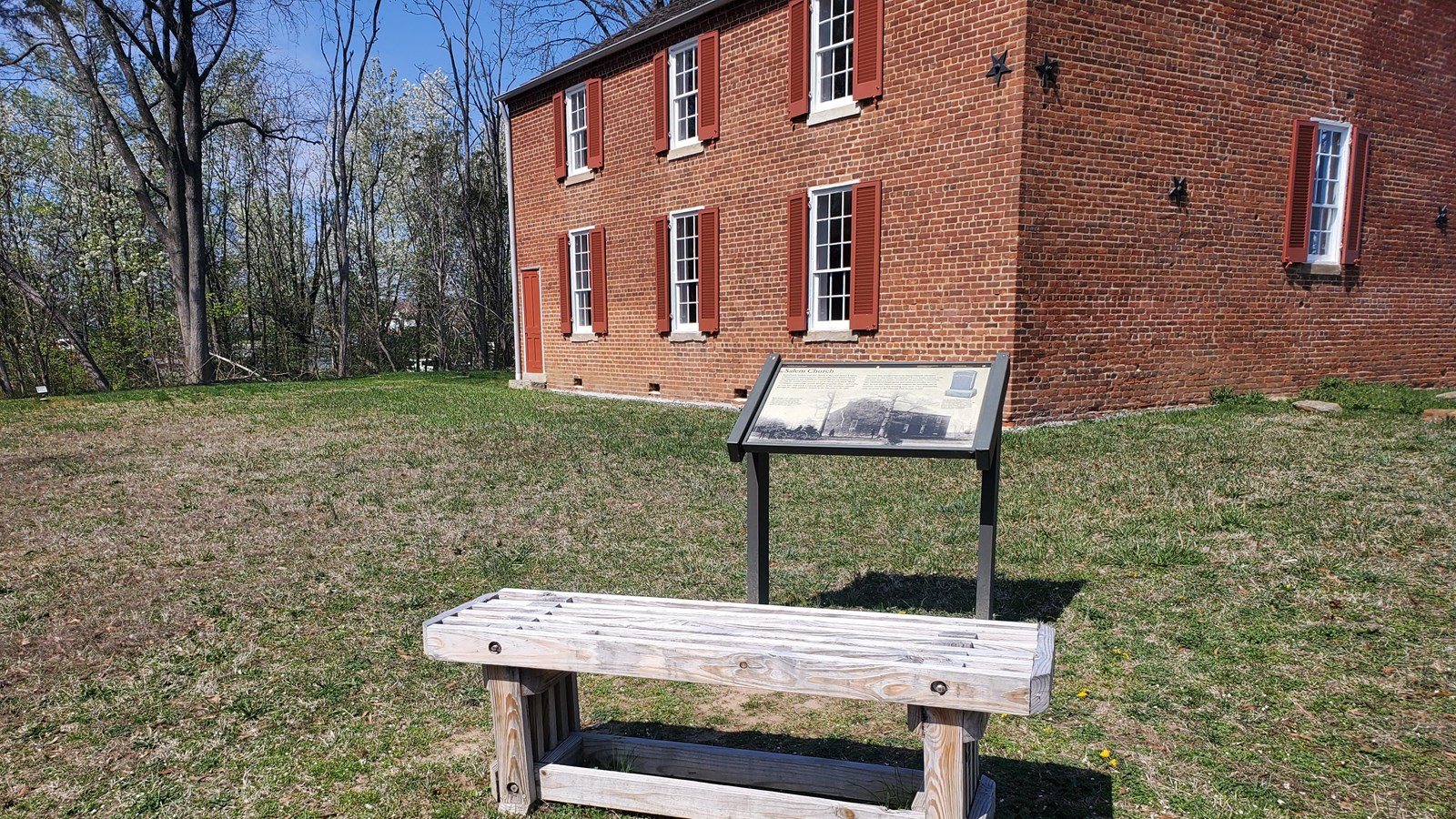Last updated: August 24, 2025
Place
Wayside: "Salem Church"

NPS Photo
Constructed in 1844, historic Salem Church was one of many local churches located in Spotsylvania County, Virginia on the eve of the Civil War. Today, Salem Church is often recognized for its role as a refugee camp and battle ground during the Fredericksburg and Chancellorsville Campaigns.
This wayside sits in the church yard looking towards the south face of the historic church. The simple facade of windows is interrupted by one doorway. During the Antebellum period, church rules dictated that Salem’s Black congregants had to sit in the upper gallery, accessed through this side doorway. White members entered through the main doors on the west side and sat in pews on the ground level.
Before the Civil War, policing of Black religious activity allowed supporters of slavery to maintain power. As debates over slavery and secession spread throughout the country, several Christian denominations, including Baptists, split into pro- and anti- slavery factions. Many of Salem’s members supported slavery, including Reverend Chancellor, who enslaved seven people. Consider how Chancellor’s preaching might have impacted his congregants’ views on slavery.
When the Civil War began in 1861, church congregations throughout the nation had already divided over the issue of slavery. Think about how Salem Church’s attendees, both free and enslaved, reacted to the outbreak of war. In the matter of one year, war scattered Salem Church’s congregation.
This wayside sits in the church yard looking towards the south face of the historic church. The simple facade of windows is interrupted by one doorway. During the Antebellum period, church rules dictated that Salem’s Black congregants had to sit in the upper gallery, accessed through this side doorway. White members entered through the main doors on the west side and sat in pews on the ground level.
Slavery and Salem Church
On the eve of the Civil War, local resident Melzi Chancellor served as Salem Church’s pastor. At the time, Salem Baptist Church had roughly eighty members, one fourth of whom were Black. Virginia laws forbade Black Americans from gathering in public, which greatly limited their ability to form their own church congregations, unless a White overseer presided over church services. Additionally, enslaved people often had to receive a pass from their enslaver to travel independently. Some of Salem’s White attendees brought the people they enslaved with them to church services.Before the Civil War, policing of Black religious activity allowed supporters of slavery to maintain power. As debates over slavery and secession spread throughout the country, several Christian denominations, including Baptists, split into pro- and anti- slavery factions. Many of Salem’s members supported slavery, including Reverend Chancellor, who enslaved seven people. Consider how Chancellor’s preaching might have impacted his congregants’ views on slavery.
When the Civil War began in 1861, church congregations throughout the nation had already divided over the issue of slavery. Think about how Salem Church’s attendees, both free and enslaved, reacted to the outbreak of war. In the matter of one year, war scattered Salem Church’s congregation.
